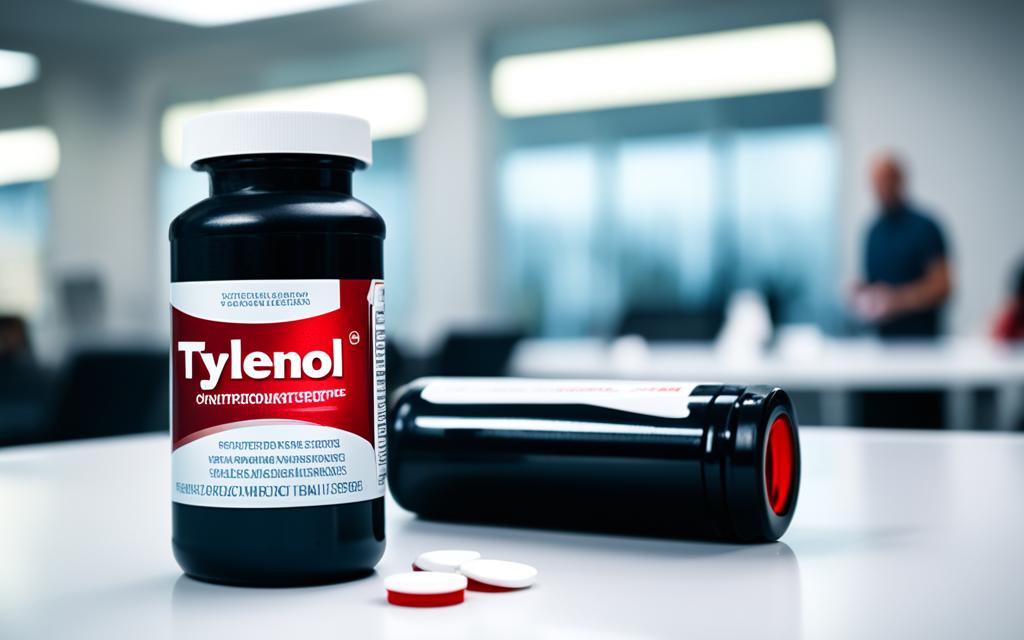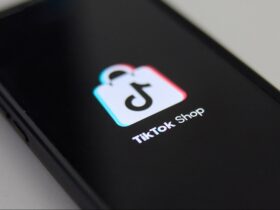In today’s hyper-connected, social media-driven landscape, a company’s reputation can make or break its success. When a crisis strikes, how an organization responds can significantly impact its long-term viability, customer loyalty, and overall market standing. This article delves into real-world case studies, examining how leading brands like Starbucks and Johnson & Johnson have successfully navigated reputation crises, revealing valuable lessons that can empower businesses to safeguard their most precious asset – their reputation.
Key Takeaways
- Effective reputation management strategies can drive better financial performance for companies
- Transparent communication and swift action are critical during a reputation crisis
- Implementing long-term policy changes can help prevent similar incidents in the future
- Proactive monitoring of online brand mentions is crucial for timely crisis response
- Learning from successful case studies can provide valuable insights for small businesses facing reputation challenges
The Imperative of Reputation Management
In today’s digital landscape, reputation management has become a critical aspect of any successful business. Your company’s brand reputation shapes public perception and directly impacts customer trust, which in turn affects your bottom line. Effective reputation management encompasses a range of activities aimed at maintaining a positive brand image, addressing negative reviews, and managing crises effectively.
Unpacking the Reputation Management Challenge
Navigating the reputation management landscape poses a unique set of challenges for businesses. From dealing with negative feedback to handling crisis situations, ensuring consistency across communication channels is crucial. Companies must proactively monitor their online reputation and social media presence to stay ahead of potential issues. Social media monitoring tools can provide real-time insights into consumer sentiment, allowing businesses to address concerns promptly and turn critics into brand advocates.
Moreover, businesses must be prepared to respond effectively to crisis management scenarios. Regular drills and simulations can help crisis response teams hone their skills and develop a comprehensive plan to mitigate the impact of a reputation-damaging event. By understanding the patterns and event cycles that can influence a company’s reputation, leaders can adopt a more proactive approach to brand reputation preservation.
| Reputation Management Approach | Impact on Success |
|---|---|
| Focusing on the bottom line | Less likely to succeed |
| Short-term advertising campaigns | Less likely to succeed |
| Organization-wide awareness | More likely to succeed |
| Shared vision of earning a good reputation | More likely to succeed |
Ultimately, reputation management is not a one-time exercise but an ongoing process that requires constant vigilance, proactive strategies, and a commitment to building and maintaining customer trust. By prioritizing reputation management as a key business objective, organizations can position themselves for long-term success and navigate the ever-evolving digital landscape with confidence.
Case Study 1 – Starbucks Racial Bias Incident
In 2018, Starbucks, the iconic coffee chain, found itself at the center of a reputation crisis when two African-American men were arrested at one of their Philadelphia, triggering widespread backlash. This high-profile incident shed light on the important issue of racial bias and discrimination, challenging Starbucks to respond swiftly and effectively.
The Response: Transparency and Training
Starbucks’ response to the crisis demonstrated their commitment to transparency and accountability. CEO Kevin Johnson promptly apologized to the men who were arrested and flew across the country to deliver apologies in person. The company also closed over 8,000 company-owned stores for a half-day of mandatory racial bias education, reaching a total of 175,000 employees.
A Commitment Towards Long-Term Change
Starbucks recognized that a one-time training session was only the first step in addressing the crisis. They emphasized that the incident was a wake-up call and that the company would continue to work towards long-term, systemic change to prevent similar occurrences in the future. This included the development of new policies and procedures to ensure a more inclusive and equitable customer experience.
Lessons from Starbucks' Reputation Management Strategy
Starbucks’ crisis management approach offers valuable lessons for other businesses navigating reputational challenges. The importance of timely response, transparent communication, and a commitment to long-term change are key takeaways that can help organizations effectively address and recover from crises that threaten their brand reputation and public trust.
Case Study 2 – Johnson & Johnson's Tylenol Crisis
The 1982 Tylenol crisis stands as a renowned example of effective crisis management. When seven people in Chicago tragically died after ingesting cyanide-laced Tylenol capsules, Johnson & Johnson responded swiftly by recalling all Tylenol products nationwide, prioritizing customer safety over immediate financial concerns.
The Role of Transparency in Reputation Management
Johnson & Johnson’s response was marked by transparency, as they openly communicated with the public and established a hotline for concerned consumers. This open and honest approach helped the company maintain trust and credibility during a challenging time.
Proactive Response: A Key Aspect Of Effective Crisis Management
In addition to their transparent communication, Johnson & Johnson’s proactive approach, including the introduction of tamper-resistant packaging, set new industry standards for crisis management. This swift action and customer-centric decision-making played a crucial role in preserving the brand’s reputation.
| Key Statistics | Impact |
|---|---|
| Tylenol was responsible for 19% of Johnson & Johnson’s corporate profits during the first 3 quarters of 1982. | Demonstrates the significance of Tylenol to the company’s financial performance. |
| Tylenol accounted for 13% of Johnson & Johnson’s year-to-year sales growth and 33% of the company’s year-to-year profit growth. | Highlights the importance of Tylenol as a key driver of the company’s growth. |
| Tylenol held a 37% market share in the painkiller field, outselling the next four leading painkillers combined. | Showcases Tylenol’s dominant position in the market and the potential impact of the crisis on the company. |
Johnson & Johnson’s handling of the Tylenol crisis has been widely praised as an exemplary case in the history of crisis communications. Their swift, transparent, and proactive response set the standard for effective crisis management and demonstrated the power of prioritizing customer safety and restoring brand trust.

Insights from Johnson & Johnson's Crisis Management Approach
The Tylenol crisis response by Johnson & Johnson is widely regarded as an exemplar of effective crisis management. This section delves deeper into the key insights gained from the company’s approach, highlighting the importance of prioritizing customer safety, implementing a proactive response, and maintaining transparent communication with the public.
In 1982, Johnson & Johnson faced a devastating crisis when several individuals died after consuming tampered Tylenol capsules. Instead of prioritizing financial considerations, the company quickly recalled all Tylenol products nationwide, showcasing their unwavering commitment to public safety. This proactive response, coupled with transparent collaboration with law enforcement agencies and regulatory bodies, enabled Johnson & Johnson to swiftly address the crisis and mitigate further damage to their reputation as a trusted healthcare brand.
The Johnson & Johnson crisis management approach also involved the introduction of tamper-evident packaging as a preventative measure. This strategic move not only reassured consumers about product integrity but also set a new industry standard for product safety. By prioritizing customer-centric reputation management, Johnson & Johnson was able to rebuild trust and emerge from the crisis as an even stronger and more respected company.
Today, Johnson & Johnson continues to be recognized for its ethical practices and commitment to transparency, ranking among the world’s most respected companies. The Tylenol crisis case study serves as a powerful testament to the importance of proactive crisis management and the long-term benefits of prioritizing customer welfare over short-term financial gains.
| Key Insights from Johnson & Johnson’s Crisis Management Approach |
|---|
| – Prioritizing customer safety over financial considerations |
| – Implementing a proactive and transparent response |
| – Introducing preventative measures to ensure product integrity |
| – Rebuilding trust and reputation through ethical practices |
Reputation Crisis: Real-World Examples
Navigating a reputation crisis is a critical challenge facing many businesses today. By examining real-world case studies, we can gain valuable insights into the diverse strategies and tactics employed by companies in effectively managing their brand reputation. Let’s explore some notable examples that underscore the importance of proactive crisis management.
The Volkswagen emissions scandal serves as a cautionary tale of the consequences of deceptive practices. When the company’s diesel vehicles were found to be manipulating emission test results, it led to a significant loss of public trust and a tarnished brand reputation. Volkswagen’s response, which involved a lack of transparency and delayed apologies, further exacerbated the situation, ultimately resulting in billions of dollars in fines and a long road to rebuilding its credibility.
In contrast, Burger King’s approach to a controversial social media post demonstrates the importance of adaptability and responsiveness. The fast-food giant’s decision to quickly remove the offending post and issue a sincere apology, coupled with proactive outreach to affected communities, showcased their ability to navigate a sensitive situation effectively.
| Company | Reputation Crisis | Response Strategy | Outcome |
|---|---|---|---|
| Volkswagen | Emissions Scandal | Lack of transparency, delayed apologies | Billions in fines, long road to rebuilding credibility |
| Burger King | Controversial Social Media Post | Removed post, issued sincere apology, proactive outreach | Effectively navigated the sensitive situation |
These examples underline the importance of proactive crisis management, transparent communication, and a willingness to adapt and respond swiftly to maintain a positive brand reputation, even in the face of significant challenges.
Small Businesses and Reputation Crisis Management
As a small business owner, you understand the importance of maintaining a strong online reputation. However, navigating a reputation crisis can be especially challenging when resources are limited. By learning from the crisis management strategies of big-brand case studies, you can adapt effective approaches to protect your small business’s reputation and ensure long-term success.
Learning from Big-Brand Crisis Management Case Studies
While large corporations often have dedicated crisis management teams and ample resources, small businesses can still apply the best practices observed in high-profile cases. Key lessons include the importance of transparency, swift communication, and preparedness.
For example, the Starbucks racial bias incident highlighted the need for comprehensive employee training and a genuine commitment to long-term change. Similarly, Johnson & Johnson’s handling of the Tylenol crisis demonstrated the power of proactive response and prioritizing customer safety. By studying these case studies, small business owners can identify strategies to address reputation crises effectively, even with limited resources.
| Key Lessons from Big-Brand Crisis Management | How Small Businesses Can Apply Them |
|---|---|
| Transparency in communication | Promptly address issues, provide updates, and be honest about the situation |
| Proactive response and preparedness | Develop a crisis communication plan to quickly mitigate the impact of negative events |
| Long-term commitment to change | Implement employee training and review processes to prevent future incidents |
By adapting the best practices of large-scale crisis management, small businesses can strengthen their reputation crisis management strategies and effectively navigate unexpected challenges. This, in turn, can help them maintain a positive online presence, attract new customers, and ensure the long-term viability of their operations.
Conclusion
In conclusion, the case studies explored in this article demonstrate the critical importance of effective reputation management in today’s business landscape. By examining how leading brands like Starbucks, Johnson & Johnson, and others have navigated reputation crises, readers have gained insights into successful strategies, including the value of transparency, proactive response, and long-term commitment to change. These real-world examples provide a roadmap for businesses of all sizes to protect their brand reputation and emerge stronger from challenging situations.
As the business world continues to evolve, the ability to effectively manage reputational crises will remain a key differentiator for companies seeking to maintain customer trust and secure their long-term success. By leveraging the lessons learned from the case studies and implementing comprehensive reputation management strategies, organizations can be better prepared to navigate the complexities of the digital age and safeguard their most valuable asset – their reputation.
FAQ
What is the importance of reputation management for businesses?
Reputation management is essential for businesses as it shapes public perception, fosters customer trust, and directly impacts a company’s bottom line. It encompasses activities aimed at maintaining a positive brand image, addressing negative reviews, and effectively managing crises.
What are the key challenges businesses face in navigating reputation management?
Businesses face challenges in dealing with negative feedback, handling crisis situations, and ensuring consistency across communication channels when it comes to reputation management.
How did Starbucks respond to the racial bias incident in 2018?
Starbucks responded to the racial bias incident by taking swift action, communicating transparently, and committing to long-term change. This included closing thousands of stores for employee training and implementing new policies to address the issue and prevent similar occurrences in the future.
What were the key elements of Johnson & Johnson’s crisis management approach during the Tylenol crisis?
Johnson & Johnson’s crisis management approach during the Tylenol crisis was exemplary, featuring transparency in communication, prioritizing customer safety, and a proactive response, including the nationwide recall of Tylenol products and the introduction of tamper-resistant packaging.
What can small businesses learn from the crisis management strategies of large brands?
Small businesses can adapt the best practices observed in large-scale crisis management, such as the importance of preparedness, transparent communication, and swift action, to protect their own reputations and ensure long-term success, despite their limited resources and capacity to withstand unexpected setbacks.















